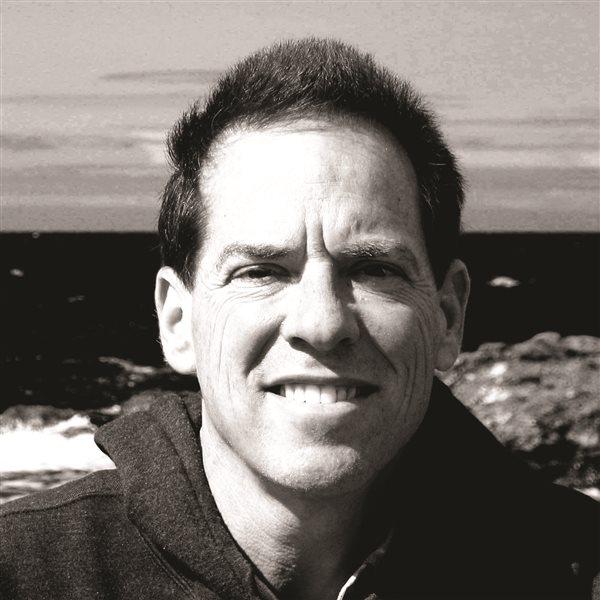Flying in circles-ovals actually-may not sound like fun, but it's some of the most enjoyable piloting I do. Like many of us, I sometimes wonder beforehand whether the pain of practicing holding patterns and instrument approaches is really necessary. But once in the air, I soon remember why. Staying sharp at this stuff takes practice, and sharp is what any pilot wants to be when flying in the clouds.
My first practice approach today is just down the road at Sedona. "Wow, you could never actually land from this missed approach point, could you?" says Mark. "I'm learning lots today, especially after studying for my IFR knowledge test. No video depicts everything you learn in the air."
I ponder Mark's progress since we met. "I'm a 12-hour student pilot learning to fly here in Flagstaff," he'd written 14 months ago. "My instructor has been unbelievably helpful and patient but my landings are sporadic at best. At times I find my airplane's attitude shifting off centerline during my roundout. That makes for a hard and sloppy landing. I've read all I can find on this issue, but wonder if you can share any ideas or resources that may help."
I soon learned that Mark's concerns run deeper than his e-mail suggested. A natural athlete accustomed to quickly mastering physical skills, Mark had found learning landings even more trying than most of us do. I reassured him that like basketball players, pilots invest their flying lives refining their skills under constantly varying conditions. "It's like shooting hoops," I said. "Some days you're off, and others right on. It takes time to improve your percentages." Although Mark was relieved to hear that other pilots face similar challenges, that didn't cure his landings.
A subsequent e-mail was more telling: "Is it normal for a student around this time to fight a certain level of-not quite fear, but maybe apprehension? That's where I am now. The initial thrill and adrenaline rush has been substituted with reality, which is probably not such a bad thing." I conjured up my best pep talk, and to my delight Mark continued flying.
It took Mark seven months to earn his private pilot certificate. "That seemed like forever," he observes, "but in hindsight it moved along pretty well." Since then, Mark has nearly finished preparing for his instrument knowledge test, and recently qualified as a basic ground instructor. (You needn't be a flight instructor to earn your ground instructor certificate, nor even a pilot.)
"Shouldn't you use a parallel entry for this holding pattern, instead of a teardrop?" Mark asks as we maneuver near Flagstaff. Talk about teardrops-I try to defend my logic, but as we blow onto the non-holding side of the course I realize he's correct. This guy is sharp, but too nice to rub it in.
Even while grappling with landings, Mark was researching airplanes to buy. Not even a tight budget could squelch his dream. "Guess what!" he boasted a month after earning his certificate. "I bought a half-share in a 1961 Cessna 182. Come see it!" As usual, my friend had done his homework. The airplane is clean for its age, and Mark's new partner is an experienced aircraft owner he can learn from. Now Mark flies all over the state.
"A funny thing happened at Sierra Vista last week," he mentions during a lull. Mark had phoned the night before to discuss landing procedures at the joint-use military/civilian airport, but never shared the flight details. "A bizarre-looking aircraft held short of the runway waiting for me to land," he explains. "After touchdown I asked, 'Tower, was that an unmanned airplane I just passed?' 'Yes, it was,' replied the controller. 'Actually there is a man sitting somewhere...' interjected a third voice. It was from the UAV! Just wish I'd asked him exactly where he was sitting."
As I pore over glowing instruments, the sun vanishes in an orange blaze of glory. "This sunset reminds me of flying home from Globe last Wednesday, east of Phoenix," says Mark. "I'd planned to return home by sunset, but given the headwinds I was 45 minutes late. So I found myself landing in darkness with crosswinds at 17 knots gusting to 26. Although I was prepared to go around I actually did a pretty good job of it-landed one-two-three on the upwind wheel, the other main wheel, and then the nose gear-just like you're supposed to!" Mark simulates the landing with his hand. "Truthfully, it was pretty stressful," he adds. "If someone had asked me that evening to fly again the next day I'd probably have said, 'No way!' But of course by the next morning I couldn't wait to take off again."
Silently I complete my final approach. "Two and a half hours,'" observes Mark, checking his watch after landing. "We could've flown to California in that amount of time. It sure went fast, though! Do you realize it was exactly a year ago that I first soloed?"
"You've come a long way in a short time, Mark."
"I was just thinking that myself. Boy, am I glad I didn't quit!"
Greg Brown was the 2000 National Flight Instructor of the Year. His books include Flying Carpet, The Savvy Flight Instructor, The Turbine Pilot's Flight Manual, Job Hunting for Pilots, and You Can Fly! Visit his Web site.



